Red light therapy involves exposure to specific wavelengths of LED light (red and near infrared light) to the skin for therapeutic benefit. These two wavelengths of light combined have been shown to create the biggest biological response in the body compared to other wavelengths. Because red light releases ATP into the cells, one of the main beneficial outcomes of red light therapy is that it offers better cellular functioning. This can lead to enhanced overall health and wellbeing, and systemic improvements across the body. The scientific literature on red light therapy is robust and supports a long list of beneficial claims. While mostly used as a facial device, it offers a multitude of treatment applications in holistic medicine. This article talks about 8 of the most common benefits of red light therapy for overall health and wellbeing.
Red Light Therapy Reduces Arthritis Symptoms
Red light therapy can effectively reduce chronic joint pain associated with arthritis. Our body produces certain proteins when we are exposed to regular UV light. These proteins negatively affect joints and the tissue surrounding joints. It is hypothesised that the activation of these proteins, along with the cellular degradation they induce, leads to bone deterioration and a host of symptoms that involve inflammation and pain. Red light therapy stimulates the production of the signalling molecule called opsin, which is responsible for red light therapy’s anti-inflammatory effect. It is possible that a combination of opsin and red light therapy results in a great relief of joint pain associated with arthritis.
Red light therapy improves sleep
Red light therapy is known to help with sleep. This is because it’s been shown to help regulate our circadian rhythm. The circadian rhythm is a coordinated pattern of events that allow our bodies to function efficiently. Depending on how light and dark hours are regulated, our circadian rhythm can be on or off. Using red light therapy has been shown to reset the body’s internal clock, even on a regular basis.
One study conducted on ten patients with insomnia demonstrated significant improvements in sleep quality after just one session. Another study also found a dramatic improvement in sleep quality for 60% of participants after they used a red light therapy lamp for one hour per day for three weeks.
The results from the studies demonstrated a marked improvement in both sleep quality and daytime alertness. A corollary of this is it also promotes better digestion. Insufficient sleep is linked with inadequate digestion, which affects general health.
Red light therapy improves mental health
Red light therapy is known to enhance mental wellbeing, in both daily life and during stressful times. It’s been proven to boost serotonin and dopamine levels.
Psychiatry studies have shown that the release of melanopsin, the colour sensitive receptor for red light, has been shown to help lift mood, thus increasing self-esteem. This is interesting because melanopsin is naturally produced in our brain cells, which is the reason why it has an antidepressant effect.
Other studies have shown that bright red light has been shown to decrease anxiety, pain and heart rate, and boost cognition.
As mentioned earlier, our body produces melatonin, the hormone that regulates our sleep and circadian rhythms, when exposed to the night time sky. The upshot of this is improved sleep which yet again helps with mental wellbeing.
Red light therapy boosts metabolism
Red light therapy boosts metabolism. When the body is starved of oxygen and nutrients, it increases metabolism to compensate for the deficit. Since red light therapy improves circulation, it also activates the body’s metabolic system. It improves oxygen delivery to the muscles and thus stimulates muscle movement.
When your muscles work, you feel better, look better, and perform better. The link between red light therapy and metabolism was first suggested by Dr Joseph Heitman in 1991. Having more blood flowing through your body gives your muscles more energy to do work, giving you more energy throughout the day. This is particularly important for those with chronic pain, as frequent movement helps to alleviate it.
In addition, red light therapy has been shown to improve insulin sensitivity and physical exercise.
Red light therapy has anti-inflammatory effects
This is one of the most popular benefits and uses of red light therapy. One of the primary reasons why inflammation is harmful is because it stops the process of healing. When cells are injured, they respond by producing a variety of molecules called cytokines. In the case of chronic inflammation, these cytokines can damage and impair the immune system. But when produced in excessive amounts, they can damage healthy cells as well. Red light therapy reduces the amount of inflammation by inhibiting the production of cytokines.
Red light therapy can improve skin
Perhaps the most known use and benefit of red light therapy is skin rejuvenation. Red light therapy devices are most often used as facial light therapy machines. Over the past decade, research has shown significant improvements in the appearance of the skin in response to red light. This includes faster and more extensive regeneration, reduced wrinkles, and improved elasticity. Red light therapy can also help treat acne scarring. It penetrates deep below the skin’s surface to help soothe and repair tissue. Red light therapy also enhances the effectiveness of topical medications such as skincare creams and anti-aging products. It works well in combination with other facial devices and facial treatments.
Red light therapy is good for pain
Red light therapy also has a therapeutic effect on the body when it comes to chronic pain. One of the most notable clinical studies on red light therapy and chronic pain was published in 2015. The researchers concluded that infrared light can offer relief for chronic pain through improved circulation, reduction of tissue inflammation and degradation of the tissue matrix (muscle and connective tissue). (Source) Red light therapy is also good for relieving joint stiffness. This is likely due to the fact that red light therapy can enhance the cell signaling pathways involved in bone formation, repair, and proliferation. The researchers further report that red light therapy “significantly reduces” the severity of arthritis.
Red light therapy improves athletic performance
Another well-known and frequently used benefit of red light therapy is its improvement of athletic performance. The higher the intensity of the red light emitted, the stronger the muscle contraction, and the more intense the athlete’s performance will be. This is because RLT reduces oxidative stress and increases production of adenosine triphosphate (ATP). Cells become energised, leading to increased cell proliferation and increased tissue oxygenation. One study showed that groups receiving red light therapy treatments showed gains in muscle strength as well as fatigue resistance. (Source)
It is also a convenient way to speed muscle healing. Another study found that stimulating muscles with red light therapy reduced muscle damage and pain, resulting in increased muscle mass and athletic performance. (Source)
Conclusion
Red light therapy is a scientifically proven, non-invasive way to treat and prevent a variety of diseases. This article shows just some of the most promising benefits of red light therapy for health. While the science behind the proposed mechanisms of action of red light therapy have yet to be fully understood, its physiological benefits are shown in study after study. To date, there are over 6,000 clinical papers on this exciting modality. Its full potential has yet to be uncovered, but it already has a multitude of treatment applications in medicine and dermatology. As our knowledge of red light therapy expands and refines, all evidence shows we should continue to take advantage of this promising technology in the clinic.





